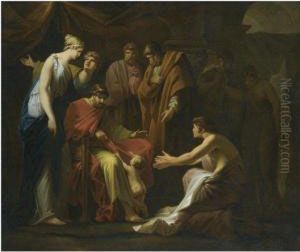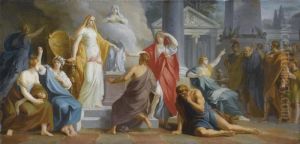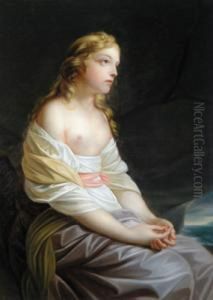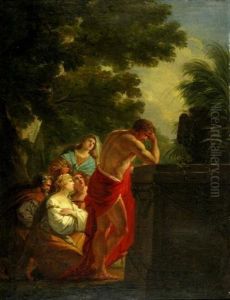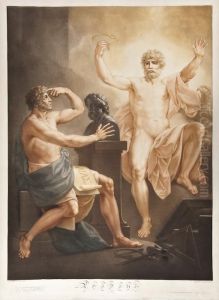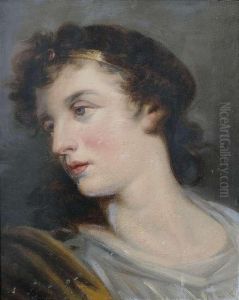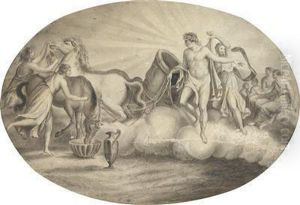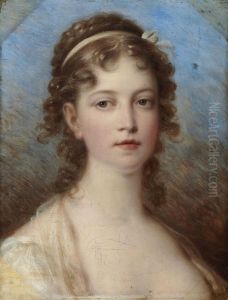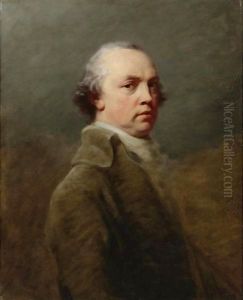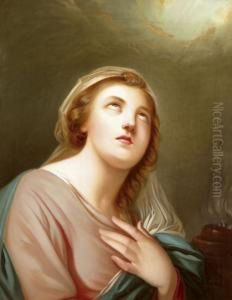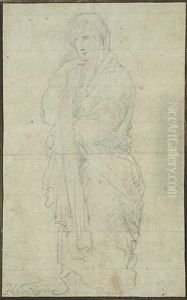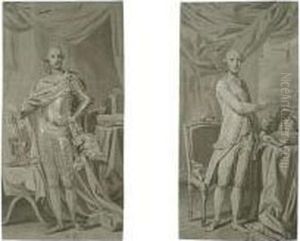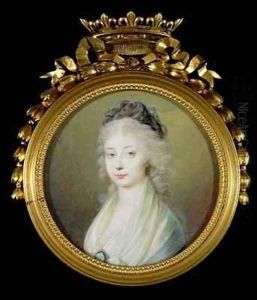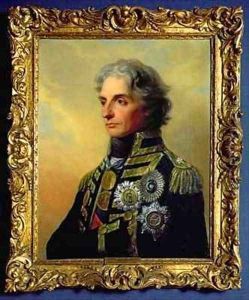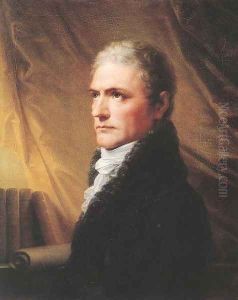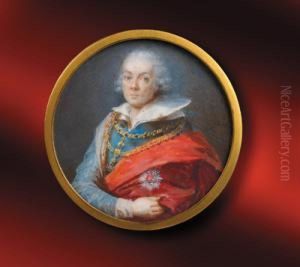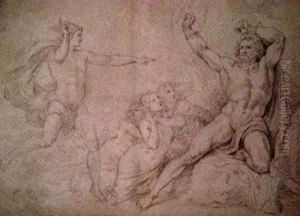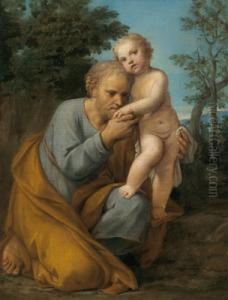Friedrich Heinrich Fuger Paintings
Friedrich Heinrich Füger was an esteemed German classicist painter, born on February 8, 1751, in Heilbronn. He began his artistic journey at a young age, demonstrating a keen interest and aptitude for the arts. Füger received his initial training in painting from his uncle, Heinrich Füger, who was a painter and director at the Academy of Arts in Leipzig. In 1764, Friedrich moved to Vienna to continue his studies at the Akademie der bildenden Künste Wien (Academy of Fine Arts Vienna), where he worked under the tutelage of Adam Friedrich Oeser and later Martin Johann Schmidt, also known as 'Kremser Schmidt'.
Füger's early works were influenced by the Rococo style, but he soon embraced the Neoclassical movement, which was gaining prominence throughout Europe as a reaction against the ornate Rococo style. Füger's talent was recognized early in his career, and he became a sought-after portraitist among the Viennese aristocracy. His portraits were known for their clarity, precision, and the psychological depth he captured in his subjects.
In 1774, Friedrich Heinrich Füger traveled to Rome, which was a turning point in his career. There, he was deeply inspired by the works of classical antiquity and the Renaissance masters. His style evolved to incorporate the ideals of classical beauty and harmony, which became hallmarks of his mature work. In Rome, he became acquainted with other artists and intellectuals of the time, further enriching his understanding and mastery of the arts.
Upon returning to Vienna in 1783, Füger's reputation continued to grow. He was appointed as a professor at the Academy of Fine Arts in 1795, and later became its director. As an educator, Füger was instrumental in shaping the next generation of European artists. He was known for promoting the principles of classical art and advocating for artistic rigor and discipline.
Friedrich Heinrich Füger's contributions to art extend beyond his teaching and his portraits. He also excelled in historical and mythological paintings, bringing scenes from ancient history and mythology to life with his precise draftsmanship and attention to detail. His works are characterized by their elegant compositions, refined use of color, and the emotional intensity of the figures portrayed.
Füger's influence was significant, and his works can be found in various museums and collections across Europe. He passed away on November 5, 1818, in Vienna, leaving behind a legacy as one of the leading figures in the Neoclassical art movement of his time. His dedication to the classical ideals and his impact on the art world continue to be celebrated by art historians and enthusiasts alike.

